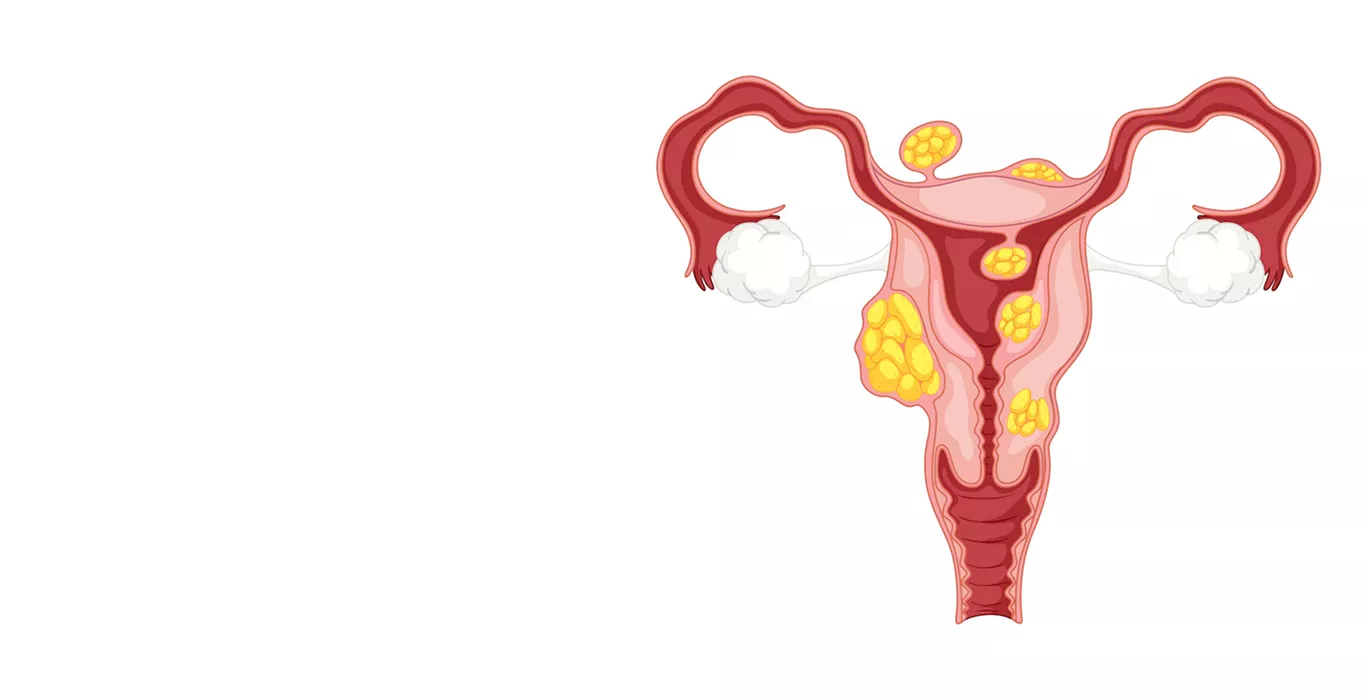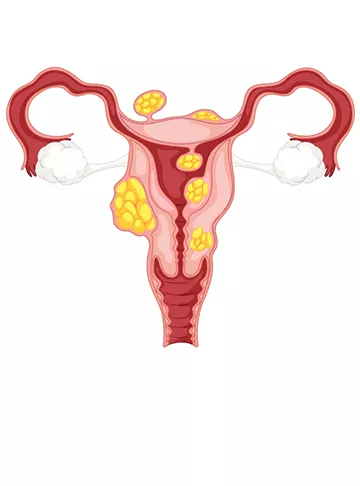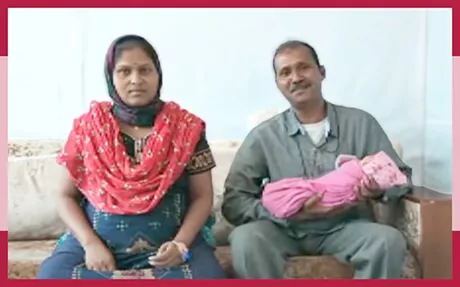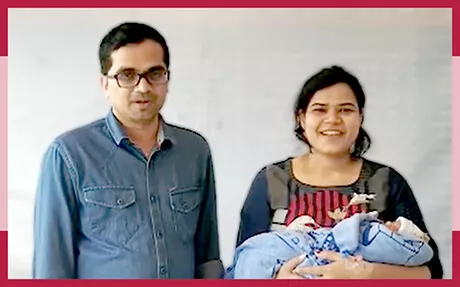What are Uterine Fibroids?
Uterine fibroids are noncancerous growths that develop in or on a woman's uterus. These fibroids that are also known as leiomyomas or myomas, often develop during a woman’s reproductive years. Uterine fibroids usually vary in size and location. These growths are made up of muscle and fibrous tissue and can range from small, seed-like nodules to bulky masses that can distort the uterus. They aren't associated with an increased risk of uterine cancer and are quite common, with many women experiencing them at some point in their lives.
Who can get Uterine Fibroids?
Uterine fibroids primarily affect women during their reproductive years, generally between the ages of 30 and 40. However, they can occur in women of any age. Factors such as family history, hormonal levels, and obesity can influence their development.
What are the Types of Uterine Fibroids?
Uterine fibroids are classified based on their location within the uterus:
1. Intramural fibroids: These are the most common type and grow within the muscle wall of the uterus.
2. Subserosal fibroids: They develop on the outer surface of the uterus and can grow larger, causing pelvic pain and pressure on nearby organs.
3. Submucosal fibroids: These grow into the uterine cavity and can lead to heavy menstrual bleeding and other menstrual issues.
What are the Causes of Uterine Fibroids?
The exact cause of uterine fibroids remains unknown, but several factors may contribute to their development:
- Hormonal influences: Estrogen and progesterone, hormones that stimulate the development of the uterine lining during each menstrual cycle, may promote the growth of fibroids.
- Genetic predisposition: If a close family member has had fibroids, you may be more likely to develop them as well.
-
Pregnancy-related factors: Being pregnant may slightly lower the risk of developing fibroids, and they may shrink during and after pregnancy.
What are the Symptoms of Uterine Fibroids?
Symptoms of uterine fibroids can vary based on the size, number, and location of the fibroids. Common symptoms include:
- Heavy menstrual bleeding: Menstrual periods with abnormally heavy or prolonged bleeding.
- Pelvic pressure or pain: Feelings of fullness or pressure in the lower abdomen.
-
Frequent urination: Fibroids pressing on the bladder may cause a constant need to urinate.
-
Pain during intercourse: Fibroids can cause pain or discomfort during sexual intercourse.
Does Uterine Fibroids affect Fertility?
Uterine fibroids can affect fertility depending on their size and location. Submucosal fibroids, which grow inside the uterine cavity, can interfere with fertility by blocking the fallopian tubes or disrupting the implantation of the embryo. Intramural and subserosa fibroids may also impact fertility, although to a lesser extent.
How is Uterine Fibroids Diagnosed?
To diagnose uterine fibroids, healthcare professionals may employ several methods:
- Pelvic exam: A physical examination to check for the presence of fibroids.
-
Ultrasound: An imaging test using sound waves to visualize the uterus and detect fibroids.
-
MRI: Magnetic Resonance Imaging can provide detailed images of the uterus and help determine the size and location of fibroids.
-
Hysteroscopy: A procedure in which a thin, lighted telescope is inserted into the uterus to view any abnormalities.
How are Uterine Fibroids Treated?
Treatment for uterine fibroids depends on the severity of the symptoms and the individual's health and reproductive goals. Treatment options include:
- Medications: Hormonal birth control, GnRH agonists, or tranexamic acid to manage symptoms.
- Non-invasive procedures: Uterine artery embolization (UAE) or focused ultrasound surgery (FUS) to shrink or destroy fibroids.
- Surgery: Myomectomy to remove fibroids, or hysterectomy to remove the uterus, especially for severe cases or those not planning to have children.
Frequently Asked Questions (FAQs)
Can uterine fibroids lead to cancer?
No, uterine fibroids are noncancerous growths and do not increase the risk of uterine cancer.
Can I still get pregnant if I have uterine fibroids?
Yes, many women with uterine fibroids can still conceive and have a healthy pregnancy. However, the location and size of the fibroids can affect fertility and may require treatment.
Are there any lifestyle changes that can help manage uterine fibroids?
Maintaining a healthy weight through a balanced diet and regular exercise may help manage uterine fibroids. Additionally, managing stress levels and avoiding excessive alcohol consumption can be beneficial.
Can uterine fibroids shrink on their own?
In some cases, small uterine fibroids may shrink or stop growing on their own, especially after menopause when estrogen levels decline.
Is there a risk of uterine fibroids returning after treatment?
For some women, fibroids may grow back after treatment. The likelihood of recurrence depends on various factors, including the type of treatment used and the individual's hormonal levels.
Tools to help you plan better
Get quick understanding of your fertility cycle and accordingly make a schedule to track it
Get a free consultation!


















